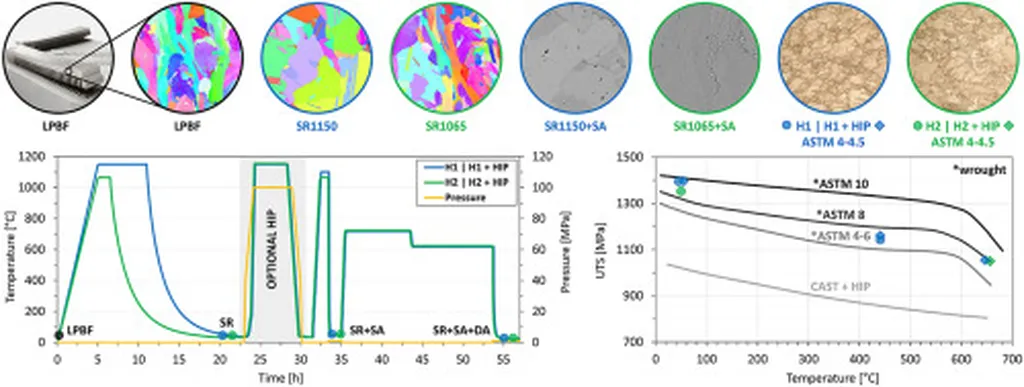In the realm of advanced manufacturing, a groundbreaking study led by Rodrigo de Oliveira França of the Federal University of São Carlos has shed new light on the behavior of Inconel 718, a nickel-based superalloy, when produced through additive manufacturing (AM) and exposed to high temperatures. The research, published in the journal ‘Materials Research’ (translated from Portuguese as ‘Pesquisa em Materiais’), delves into the intricate relationship between scanning strategies, microstructure, and heat treatment on the oxidation resistance of Inconel 718 components.
Additive manufacturing, particularly Laser Powder Bed Fusion (LPBF), has revolutionized the construction of complex geometries, offering unparalleled design flexibility. However, the anisotropic microstructure resulting from AM processes can significantly impact the material’s performance, particularly in high-temperature environments. This is crucial for industries like energy, where components often face extreme conditions.
França and his team investigated the effects of high-temperature exposure on Inconel 718 samples manufactured using two different scanning strategies and with or without age-hardening heat treatment. The samples were oriented in three different directions—X, Y, and Z—and subjected to oxidation tests at 1000°C for 24 hours. Conventional forged samples were used as a benchmark for comparison.
The results were revealing. “We observed a strong influence of both scanning strategy and heat treatment on the oxidation behavior of all faces,” França explained. Samples produced using a 0° angle scanning strategy exhibited better performance compared to those built with a 67° angle, showing less mass gain during oxidation. Heat treatment promoted grain recrystallization, which in some cases improved resistance to oxidation.
The study also highlighted orientation-dependent behavior. Faces X and Y presented similar mass gains at 0°, with non-treated samples performing better. Interestingly, face Z showed the lowest mass gain, with treated samples outperforming their non-treated counterparts.
The implications of this research are profound for the energy sector, where the reliability of components under high-temperature conditions is paramount. Understanding and optimizing the oxidation resistance of Inconel 718 through tailored scanning strategies and heat treatments can lead to more durable and efficient components, ultimately enhancing the performance and longevity of energy systems.
As the field of additive manufacturing continues to evolve, studies like this one are pivotal in shaping future developments. By providing a deeper understanding of the interplay between manufacturing parameters and material performance, researchers and industry professionals can work together to push the boundaries of what is possible, driving innovation and progress in the energy sector and beyond.
The research, published in ‘Materials Research’, offers a significant step forward in optimizing the use of Inconel 718 in high-temperature applications, paving the way for more robust and efficient energy solutions.

